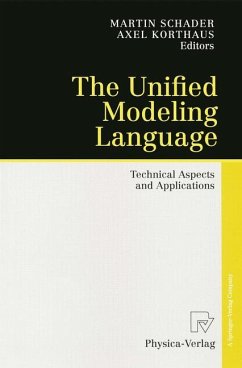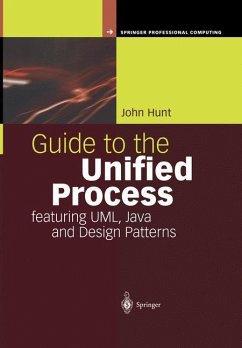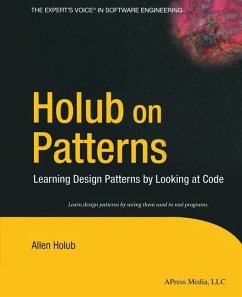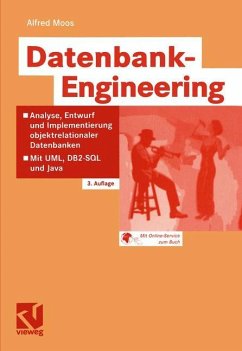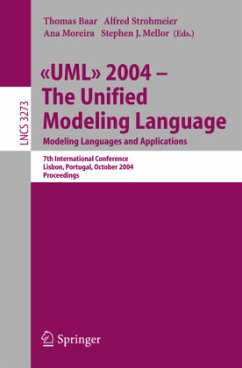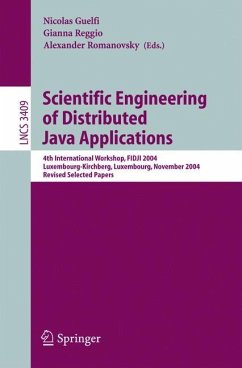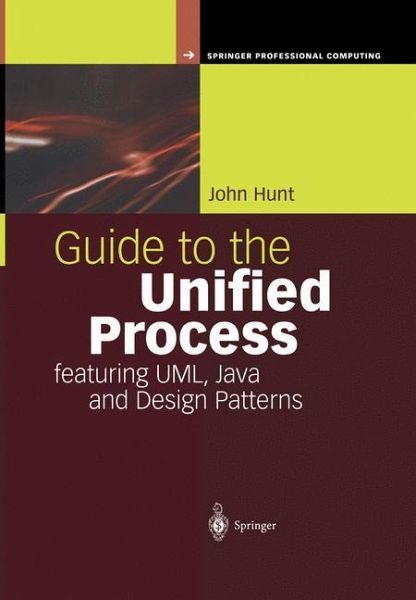
Guide to the Unified Process featuring UML, Java and Design Patterns
Versandkostenfrei!
Versandfertig in 1-2 Wochen
75,99 €
inkl. MwSt.
Weitere Ausgaben:

PAYBACK Punkte
38 °P sammeln!
The UML, or Unified Modeling Language, is the de facto standard adopted by the Object Management Group (OMG) and by almost all vendors of object modeling tools. The Unified Process is explicitly designed to work with the UML and is a whole design method covering the majority of the life cycle of a software product. John Hunt's book guides you through the use of the UML and the Unified Process and their application to Java systems. Key Topics Focusing explicitly on applying the notation and the method to Java, the book is clearly written to appeal to practitioners. This second edition is considerably revised and extended and includes examples taken from the latest version of Rational Rose and Together. All the UML references are updated to the latest version and the Patterns chapter has been expanded to include J2EE examples. New chapters are included showing how the Unified Process can be used in real world projects and project management, and there is comprehensive coverage of Agile Modeling.
- A truly practical introduction to object oriented analysis and design using the Unified Process. Where necessary the UML is introduced, to support the Unified Process steps.
- Good coverage of Design Patterns and how they integrate into Java development
- Focuses on the real world use of UML and the Unified Process via a detailed case study that follows the whole design process through from the initial setting up, to implementation in Java and Agile Modeling
- Features and Benefits
- How to use the Unified Process in real world projects
- Covers the Unified Process and UML in one book
- A concise and accessible step-by-step guide to applying the Unified Process and UML in Java
- Explains Design Patterns and discusses how Agile Modeling fits with the Unified Process
John Hunt is Technical Director at JayDee Technology Ltd. He runs industrial courses, including server-side Java technologies. He also leads development projects for government and blue chip organizations using Java, J2EE, XML and C#. He is the author of nine other books on Java, XML and object orientation.
- A truly practical introduction to object oriented analysis and design using the Unified Process. Where necessary the UML is introduced, to support the Unified Process steps.
- Good coverage of Design Patterns and how they integrate into Java development
- Focuses on the real world use of UML and the Unified Process via a detailed case study that follows the whole design process through from the initial setting up, to implementation in Java and Agile Modeling
- Features and Benefits
- How to use the Unified Process in real world projects
- Covers the Unified Process and UML in one book
- A concise and accessible step-by-step guide to applying the Unified Process and UML in Java
- Explains Design Patterns and discusses how Agile Modeling fits with the Unified Process
John Hunt is Technical Director at JayDee Technology Ltd. He runs industrial courses, including server-side Java technologies. He also leads development projects for government and blue chip organizations using Java, J2EE, XML and C#. He is the author of nine other books on Java, XML and object orientation.
1.1 Introduction This book introduces and guides the you through the use of the Unified Modeling Language (UML) and the Unified Process (both originally devised by Grady Booch,James Rumbaugh and Ivar Jacobson) and their application to Java systems.This means that the book will present you, thereader,withthenotationusedintheUMLandthestepsdescribedbytheUnifiedProcesswith particular reference to the Java environment (including the classes and the syntax). The book itself is structured in three parts. Part 1 introduces object-oriented analysis and design and the Unified Process. The UML is introduced, as necessary, to support the Unified Process steps.Part 2 discusses the topic of design patterns,while Part 3 looks at the UnifiedProcessandUMLintherealworld. The first part of the book is structured in the following manner: Chapter 2: Object -Oriented Analysis and Design This chapter surveys the most significant object-oriented design and analysis methods to emerge since the late 1980s. Chapter 3: An Introduction to the UML and the Unified Process This chapter provides the background to the UML and the Unified Process. It also presents a summary of both. Chapter 4: Software Architecture and Object-Oriented Design This chapter explains and justifies why an architecture is essential to the successful design and implementation of a large object-oriented system. Chapter 5: Requirements Discipline: Use Case Analysis Thischapterintroducestherequirementsdiscipline(whichmayalsobeknownasUseCaseAna- sis).Thisdisciplineattemptstoidentifywhatthefunctionalityofthesystemwillbe.Theseusecases will be essential as the backbone to the whole design process.





